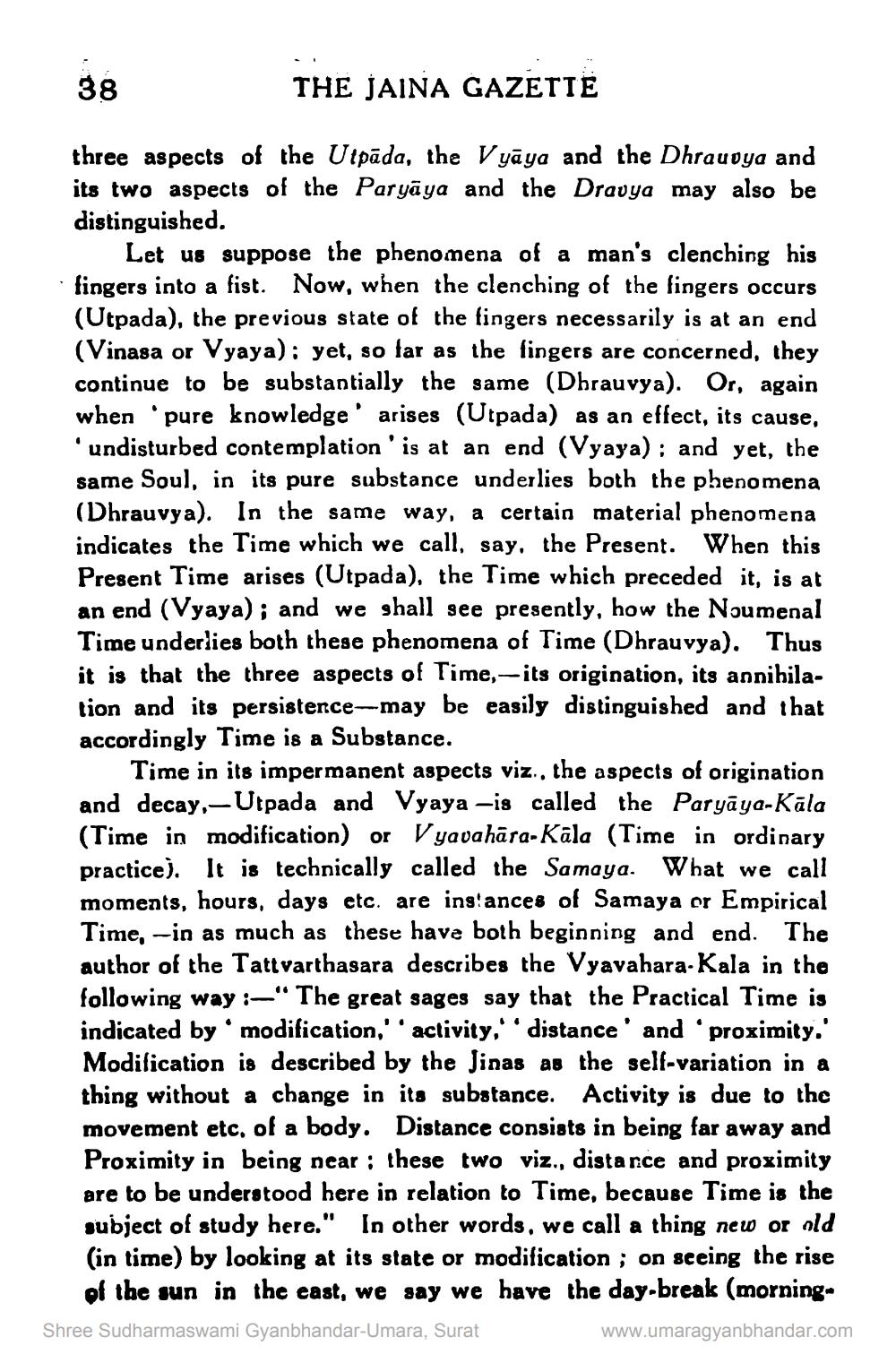________________
THE JAINA GAZETIË
three aspects of the Utpada, the Vyāya and the Dhrauoya and its two aspects of the Paryāya and the Dravya may also be distinguished.
Let us suppose the phenomena of a man's clenching his · fingers into a fist. Now, when the clenching of the fingers occurs
(Utpada), the previous state of the fingers necessarily is at an end (Vinasa or Vyaya): yet, so far as the fingers are concerned, they continue to be substantially the same (Dhrauvya). Or, again when pure knowledge' arises (Utpada) as an effect, its cause, 'undisturbed contemplation' is at an end (Vyaya); and yet, the same Soul, in its pure substance underlies both the phenomena (Dhrauvya). In the same way, a certain material phenomena indicates the Time which we call, say, the Present. When this Present Time arises (Utpada), the Time which preceded it, is at an end (Vyaya); and we shall see presently, how the Noumenal Time underlies both these phenomena of Time (Dhrau vya). Thus it is that the three aspects of Time,- its origination, its annihilation and its persistence-may be easily distinguished and that accordingly Time is a Substance.
Time in its impermanent aspects viz., the aspects of origination and decay,–Utpada and Vyaya —is called the Paryāya-Kāla (Time in modification) or Vyavahāra-Kāla (Time in ordinary practice). It is technically called the Samaya. What we call moments, hours, days etc. are instances of Samaya or Empirical Time, -in as much as these have both beginning and end. The author of the Tattvarthasara describes the Vyavahara-Kala in the following way :-" The great sages say that the Practical Time is indicated by modification,'' activity,' . distance' and 'proximity.' Modification is described by the Jinas as the self-variation in a thing without a change in its substance. Activity is due to the movement etc, of a body. Distance consists in being far away and Proximity in being near : these two viz., distance and proximity are to be understood here in relation to Time, because Time is the subject of study here." In other words, we call a thing new or old (in time) by looking at its state or modification ; on sceing the rise
of the sun in the east, we say we have the day-break (morningShree Sudharmaswami Gyanbhandar-Umara, Surat
www.umaragyanbhandar.com




